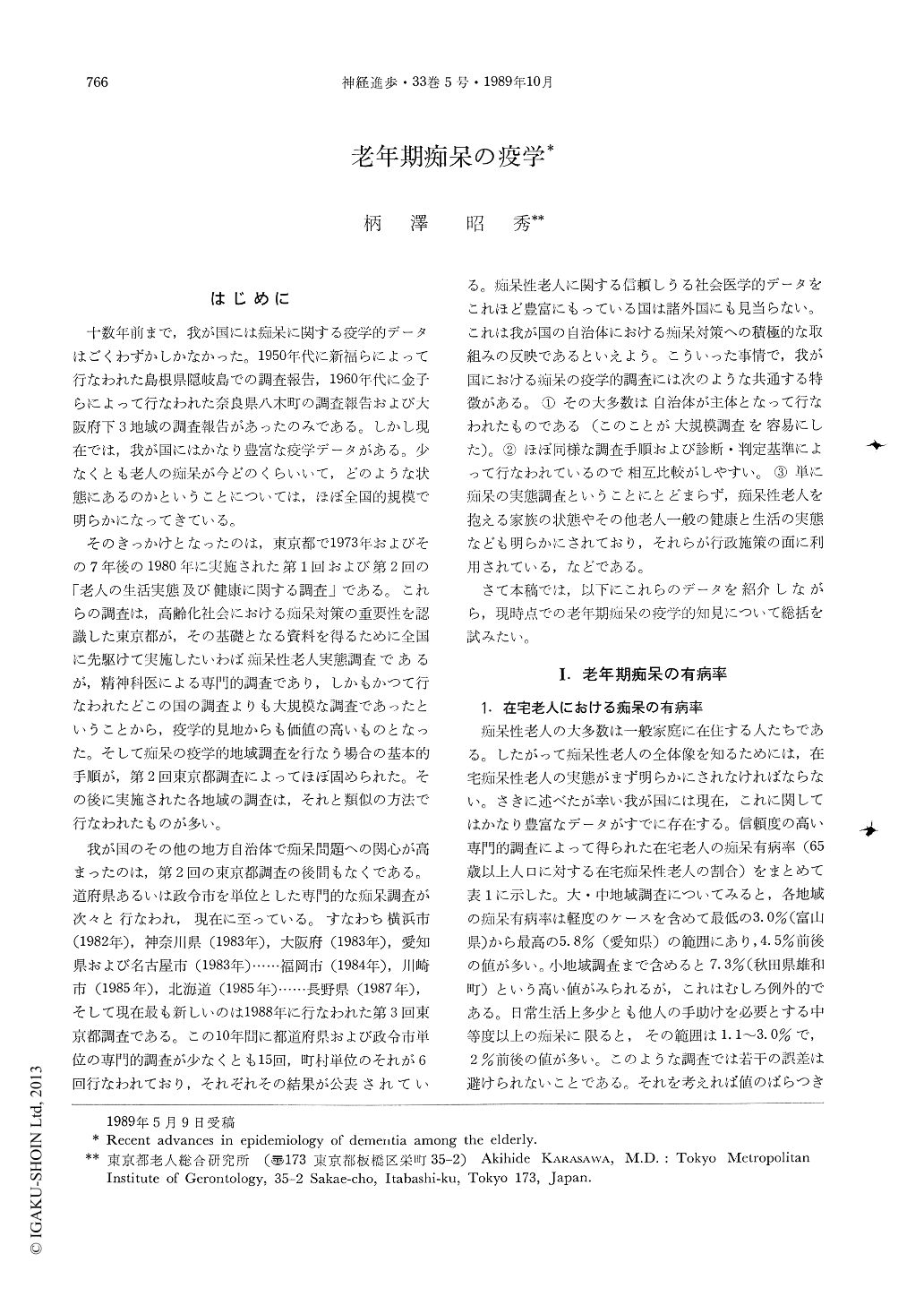Japanese
English
- 有料閲覧
- Abstract 文献概要
- 1ページ目 Look Inside
はじめに
十数年前まで,我が国には痴呆に関する疫学的データはごくわずかしかなかった。1950年代に新福らによって行なわれた島根県隠岐島での調査報告,1960年代に金子らによって行なわれた奈良県八木町の調査報告および大阪府下3地域の調査報告があったのみである。しかし現在では,我が国にはかなり豊富な疫学データがある。少なくとも老人の痴呆が今どのくらいいて,どのような状態にあるのかということについては,ほぼ全国的規模で明らかになってきている。
そのきっかけとなったのは,東京都で1973年およびその7年後の1980年に実施された第1回および第2回の「老人の生活実態及び健康に関する調査」である。これらの調査は,高齢化社会における痴呆対策の重要性を認識した東京都が,その基礎となる資料を得るために全国に先駆けて実施したいわば痴呆性老人実態調査であるが,精神科医による専門的調査であり,しかもかつて行なわれたどこの国の調査よりも大規模な調査であったということから,疫学的見地からも価値の高いものとなった。そして痴呆の疫学的地域調査を行なう場合の基本的手順が,第2回東京都調査によってほぼ固められた。その後に実施された各地域の調査は,それと類似の方法で行なわれたものが多い。
1. According to recent survey data in Japan, the prevalence of dementia among the elderly aged 65 years old and over residing at home is 3.0~5.5%, including mild cases, and the prevalence of moderate or severe cases is 1.1~3.0%. These figures are slightly smaller than those reported in Europe and the U.S.A..
2. Although no accurate number of demented elderly persons in institutions such as old people's homes, nursing homes and hospitals has been made clear yet in Japan, it can be said that the preva-lence of dementia is the highest in nursing homes and in geriatric hospitals (about 50~70%), which isfollowed by that in old people's homes (about 20%). Since the total number of beds of general hospitals is very large (over a million), the number of demented elderly patients there has a great effect on the total number of dementia. Recently some authors reported that the prevalence of dementia in gen-eral hospitals was considerably high (9.5%), a fact that is now drawing much attention.

Copyright © 1989, Igaku-Shoin Ltd. All rights reserved.


